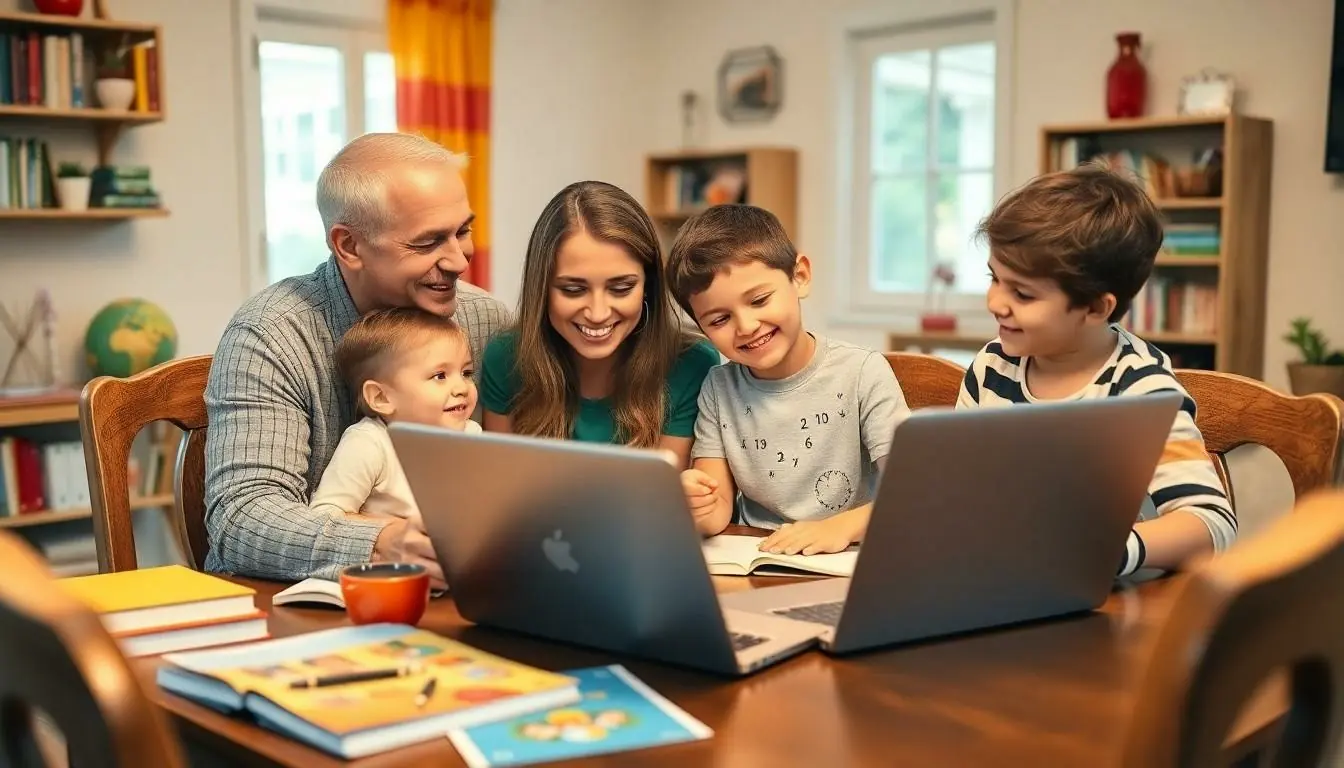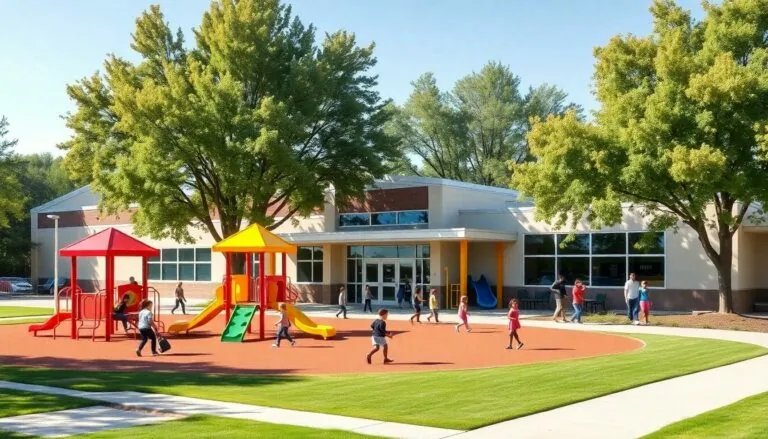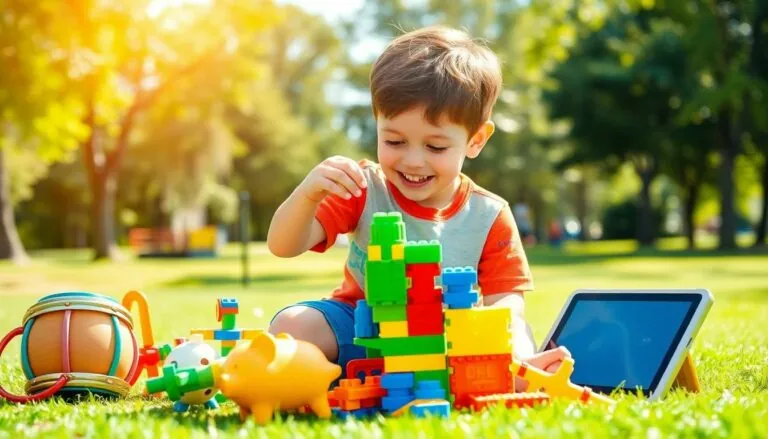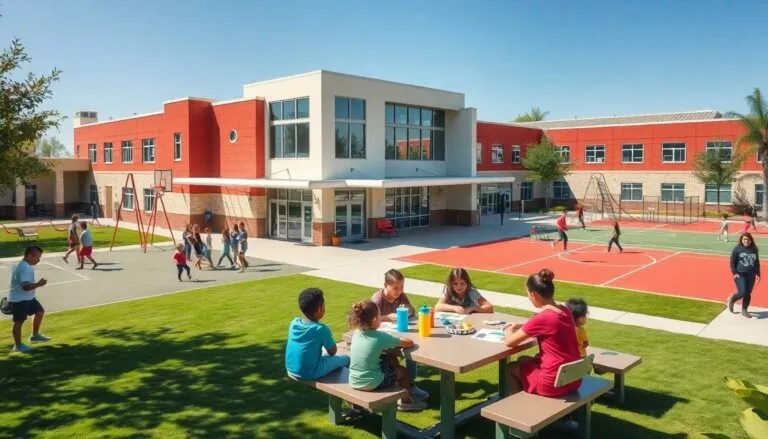Parents today face a crucial decision about their children’s education, and traditional public schools aren’t always the best fit. With growing concerns about academic standards, classroom sizes, and individualized attention, many families are exploring alternative education paths that better align with their values and goals.
From homeschooling and private academies to charter schools and online learning platforms, the educational landscape has transformed dramatically. These alternatives offer unique approaches to learning, flexible schedules, and customized curricula that can help students thrive in ways traditional classroom settings might not achieve. Each option brings its own set of advantages, challenges, and opportunities for academic and personal growth.
Table of Contents
ToggleUnderstanding School Choice Options
Educational alternatives to public schools offer diverse learning environments tailored to different academic needs pedagogical approaches. Each option provides unique advantages that accommodate various learning styles teaching methods.
Private Schools
Private schools operate independently from government oversight with self-directed curricula funding sources. These institutions maintain smaller class sizes averaging 15-20 students per classroom compared to 25-30 in public schools. The curriculum emphasizes specialized programs including college preparatory Advanced Placement International Baccalaureate courses. Students receive individualized attention through enrichment activities specialized instruction experiential learning opportunities. Many private schools incorporate religious education character development programs into their academic framework.
Charter Schools
Charter schools function as tuition-free public institutions operating under independent management. These schools create innovative teaching methods while maintaining accountability for student performance state standards. The average charter school serves 300-400 students offering specialized focus areas such as STEM arts technology. Teachers implement creative instructional approaches project-based learning differentiated instruction techniques. Charter schools provide extended learning hours specialized enrichment programs community partnerships.
Montessori Schools
Montessori education emphasizes hands-on learning self-directed exploration mixed-age classrooms. Students work at their own pace using specially designed materials that promote cognitive development sensory learning. The classroom environment contains specific learning zones for mathematics language arts practical life skills cultural studies. Teachers act as guides facilitating individual group activities based on student interests developmental readiness. Montessori programs typically maintain a 1:10 teacher-student ratio allowing for personalized attention skill development.
Homeschooling as a Popular Alternative
Homeschooling emerges as a prominent educational choice with over 3.7 million homeschooled students in the United States. This educational approach offers families complete control over curriculum selection teaching methods learning pace.
Traditional Homeschooling
Traditional homeschooling creates a customized learning environment where parents serve as primary educators. Parents select curriculum materials covering core subjects like mathematics English science social studies while incorporating specialized topics based on their children’s interests. Learning takes place through structured lessons hands-on activities field trips educational games. Many homeschooling families join local co-ops communities to provide social interaction group learning experiences. This approach accommodates different learning styles enables one-on-one instruction adapts to each child’s developmental pace.
Virtual Homeschooling
Virtual homeschooling combines traditional home education with digital learning platforms. Students access online curriculum resources video lectures interactive assignments through established educational providers. Online programs offer structured courses taught by certified teachers track academic progress provide detailed assessments. Digital platforms incorporate multimedia elements educational games virtual laboratories enhance learning experiences. Many virtual homeschool programs include live online classes where students interact with teachers peers fostering collaborative learning opportunities. Parents maintain oversight while receiving professional support technical assistance curriculum guidance.
| Homeschooling Statistics | Data |
|---|---|
| US Homeschooled Students | 3.7M |
| Annual Growth Rate | 8% |
| Average Daily Learning Time | 3-5 hours |
| Parent Satisfaction Rate | 89% |
Microschools and Learning Pods
Microschools combine the personalization of homeschooling with the social aspects of traditional schools. These educational environments typically serve 15-150 students in mixed-age learning groups with flexible schedules tailored to individual needs.
How Microschools Work
Microschools operate through small learning communities led by experienced educators or subject matter experts. Students gather in dedicated spaces like converted homes offices or community centers for customized instruction. The curriculum integrates core academics with project-based learning hands-on activities technology integration. Teachers track individual progress through mastery-based assessments rather than traditional grading systems. Daily schedules remain fluid allowing students to work at their own pace across subjects while maintaining accountability through regular check-ins group discussions.
Benefits of Small Group Learning
Small group learning environments enhance student engagement through increased participation interaction. Students receive immediate feedback develop stronger relationships with teachers peers. The intimate setting allows educators to identify learning gaps adjust instruction in real-time. Research shows students in groups of 8-12 demonstrate:
| Learning Outcome | Improvement Rate |
|---|---|
| Academic Performance | 30% increase |
| Class Participation | 85% engagement |
| Skill Retention | 40% higher |
| Individual Attention | 4x more teacher time |
Teachers customize lessons based on each student’s interests learning style progress level. Group projects foster collaboration critical thinking skills while maintaining academic rigor accountability.
Unschooling and Self-Directed Education
Unschooling empowers children to direct their own learning journey through natural curiosity and real-world experiences. This educational philosophy emphasizes learning through living rather than following structured curricula or traditional academic schedules.
Core Philosophy
Unschooling centers on the belief that children learn most effectively when following their intrinsic interests. Learning occurs through daily activities such as cooking (math & chemistry), gardening (biology & nutrition) or building projects (physics & engineering). This approach recognizes that education extends beyond traditional subjects into practical life skills development. Research shows unschooled children demonstrate high levels of self-motivation with 78% pursuing higher education. The philosophy values authentic experiences over standardized testing focusing on developing critical thinking problem-solving skills through hands-on exploration.
Implementation Methods
Parents create enriching environments filled with resources like books tools art supplies musical instruments games that spark curiosity. Learning happens through:
- Pursuing passion projects: Building robots writing stories creating art
- Community engagement: Volunteering internships mentorship programs
- Travel education: Museums cultural sites historical locations
- Technology integration: Online courses educational apps coding platforms
- Natural learning: Outdoor exploration environmental studies practical skills
- Social interaction: Co-ops meetups collaborative projects
Parents document progress through portfolios photographs videos project samples rather than traditional grades. Learning coaches guide students in setting goals identifying resources developing time management skills while maintaining academic standards.
| Unschooling Implementation Stats | Data |
|---|---|
| Average daily learning activities | 4-6 |
| Community engagement hours/week | 8-12 |
| Project completion rate | 92% |
| Parent involvement hours/day | 3-4 |
Religious and Faith-Based Schools
Religious and faith-based schools integrate spiritual teachings with academic curricula, serving 4.4 million students across the United States. Catholic schools represent the largest segment, educating 1.6 million students in over 6,000 institutions nationwide.
Academic Excellence and Values
Faith-based institutions maintain rigorous academic standards while emphasizing moral character development. Students in religious schools score 12% higher on standardized tests compared to public school peers. These schools feature:
- Advanced placement courses in core subjects
- STEM programs integrated with ethical principles
- Foreign language immersion starting in elementary grades
- Service learning projects tied to religious values
- Character education embedded in daily lessons
Specialized Programs
Religious schools offer distinctive educational approaches that combine faith traditions with modern pedagogy:
- Biblical integration across all subject areas
- Daily chapel or prayer services
- Religious studies classes
- Interfaith dialogue programs
- Cultural celebration events
Student Performance Metrics
| Metric | Religious Schools | National Average |
|---|---|---|
| Graduation Rate | 98.2% | 85.3% |
| College Acceptance | 94% | 66.2% |
| SAT Score Average | 1200 | 1051 |
| Student-Teacher Ratio | 12:1 | 16:1 |
Religious schools create environments where spiritual formation complements academic achievement. Teachers incorporate faith perspectives into subjects like science mathematics literature. Small class sizes enable individualized attention focused on both intellectual growth spiritual development. Parents select these institutions for their combination of academic rigor moral instruction community values.
Online Learning Programs
Digital education platforms provide structured academic programs through virtual classrooms environments. These platforms combine technology with traditional teaching methods to create engaging learning experiences for K-12 students.
Full-Time Virtual Schools
Virtual schools deliver comprehensive K-12 education through digital platforms with state-certified teachers. Students access coursework through learning management systems that include video lectures, interactive assignments, virtual labs. Leading providers like K12 Inc serve over 200,000 students across 30 states with graduation rates averaging 84%. Course schedules integrate synchronous classes for core subjects with self-paced learning modules for electives. Digital tools track academic progress through automated assessments, providing real-time feedback on student performance. Parents receive detailed analytics on attendance, grades, assignment completion through dedicated portals.
Hybrid Learning Models
Hybrid programs combine online coursework with in-person instruction at physical learning centers. Students attend campus 2-3 days per week for hands-on activities, group projects, lab work while completing other assignments virtually. This blended approach maintains scheduling flexibility while providing face-to-face interaction with teachers peers. Data shows hybrid students score 15% higher on standardized tests compared to traditional online programs. Learning centers offer specialized support services including tutoring, college counseling, social activities. Technology platforms seamlessly integrate online offline components through unified lesson planning assessment systems.
Financial Considerations
Understanding the financial aspects of alternative education options helps families make informed decisions about their children’s schooling. The costs vary significantly across different educational choices, from free public charter schools to premium private institutions.
Costs and Budgeting
Private school tuition averages $12,350 annually for elementary students and $16,040 for high school students. Religious schools offer lower rates at $8,800 per year on average. Homeschooling expenses range from $700 to $1,800 annually for curriculum materials teaching supplies. Microschools cost between $4,000 to $14,000 per year depending on location program offerings. Online learning programs charge $2,000 to $7,000 annually for full-time enrollment. Additional expenses include:
- Technology requirements: $500-1,500 for computers software subscriptions
- Educational materials: $200-600 for textbooks workbooks
- Extracurricular activities: $300-1,200 for sports arts programs
- Transportation costs: $400-2,000 annually based on distance frequency
Available Funding Options
- School-based scholarships: 45% of private schools offer merit financial need-based aid
- State voucher programs: 16 states provide funding averaging $4,700 per student
- 529 savings plans: Tax-advantaged accounts for K-12 private school tuition
- Coverdell Education Savings Accounts: Allow $2,000 annual contributions for education expenses
- Homeschool grants: Organizations provide $500-2,500 for curriculum materials
Conclusion
Finding the right educational path isn’t a one-size-fits-all decision. Today’s families have access to numerous alternatives beyond traditional public schools that can better suit their children’s unique learning needs and goals.
From homeschooling and microschools to religious institutions and online programs each option presents distinct advantages for academic growth and personal development. These alternatives offer varying levels of flexibility customization and financial commitment.
Parents who carefully evaluate their children’s needs teaching preferences and family circumstances will be better equipped to select the most suitable educational path. The growing diversity in educational options ensures that every student has the opportunity to thrive in an environment that best supports their learning journey.






